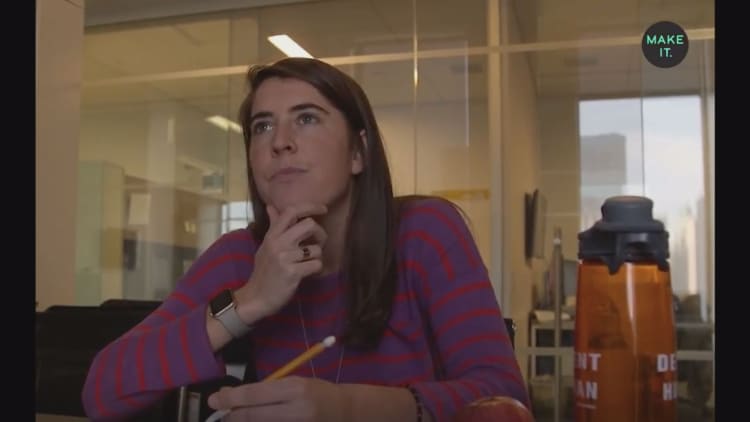When it comes to managing my money, I like to keep things as simple as possible. I automate everything, so my bills are paid automatically at the end of each month, and a set amount of money goes directly to my savings and retirement accounts every other week.
While I'm not one to mess with a well-oiled machine, the more I heard about apps that automatically invest your money, the more intrigued I became. I decided there'd be no harm in experimenting with one so, about a year ago, I downloaded Stash, an app that lets you become an investor with as little as $5.
I answered a few basic questions about my age, income and time horizon and, based off of those responses, the app recommended investments that suited my risk profile. Next, I linked my checking account and made my first $5 investment.

The key for me was setting up "Auto-Stash," which let me choose a certain amount of money to have automatically transferred from my checking account to my Stash investment account on a consistent basis. Investing $5 a week seemed reasonable enough. That's one latte, two Vitamin Waters or a round-trip on the subway.
What happens when you automate your savings is that you learn to live without the money you're setting aside because you never even see it. In my case, I not only learned to live without my $5 per week — I completely forgot about it.
It wasn't until I got a new phone recently and was re-arranging the interface when I opened up Stash for the first time in nearly a year. Thanks to my small $5 transfers each week, and a 6.34 percent return, my portfolio had grown to just over $300.
It was like finding money in my coat pocket!
To be clear, most of the $304 came from my own wallet. My contributions, minus the $1 monthly service fee Stash charges, totaled $286. But that's money that I might have spent had I never set up the automatic $5 transfer.
My return for the year of $18.13 isn't anything to write home about, either, but had I put $286 in my savings account, which offers an interest rate of 0.01 percent, I would have earned just a few dimes. Even if I put that money in my high-yield savings account, which earns 1.45 percent a year, I would only have earned about $4.
When I opened my Stash account, I chose a conservative investment strategy, but Stash lets you choose from over 40 ETFs to invest in.
Each portfolio is conveniently named so you get a better idea of exactly what you're investing in.
Investing is always a risk. The stock market goes up and down, especially this year, and since past performance doesn't guarantee future results, no one can promise me that my investment value will continue to rise. Since I'm investing for the long term and I chose a portfolio with strong diversification, it's a risk I'm wiling to take on.
In fact, downloading the app and setting up automatic transfers turned out to be such a mindless way to save that I got inspired to up my weekly contribution. But instead of investing more with Stash, I decided to test out another investing app. There are a handful to choose from, but I went with Acorns, which is distinct in that it invests your "spare change" every time you make a purchase.
I simply downloaded the app and linked the credit cards I use for everyday purchases. I also set up a recurring transfer: As with Stash, $5 will be sent automatically from my checking account to my Acorns account every week.
Time to forget about my weekly investments and hopefully be surprised all over again next year with an extra couple hundred dollars.
Like this story? Like CNBC Make It on Facebook!
Don't miss: One simple strategy saved me thousands of dollars in 2017



